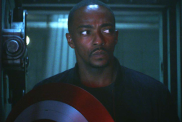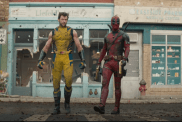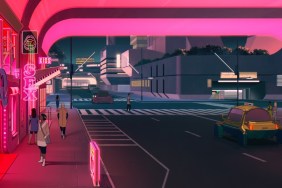After winning heaps of praise for his 2005 Holocaust drama Fateless, cinematographer-turned-director Lajos Koltai decided for his sophomore directorial outing, he would make a sharp turn into lighter but still dramatic territory. His second feature Evening, based on the novel by Susan Minot, tells the story of a woman’s lost love remembered as she lay on her deathbed. Vanessa Redgrave leads an all-star female cast including Meryl Streep, Claire Danes, Toni Collette, Natasha Richardson and Glenn Close.
The movie captures the scenic beauty of the Rhode Island shoreline, in both the 1950s and present-day. In this interview, the Hungarian director discusses his process as well as where he derived his vision for this picture.
ComingSoon.net: Since you used to be a Director of Photography, how is your relationship with your DP Gyula Pados compared to the way you used to interact with directors in the same capacity?
Lajos Kotai: I think I’m doing the same kind of way. I learned a lot from Istvan Szabo, as we worked together from “Mephisto” until “Being Julia,” that’s 28 years. He also likes to be involved with the picture, and start from the very beginning he can get behind the camera, even rehearse behind the camera. He wants to see how the space works, which belongs to the actors, and how you can block the scene through the camera. What is my space? Where can I put them? What’s the best? He was very curious about the lighting always, since we first talked about the film. So we went through the whole movie, always before everything else, just to start where the light came from. Why are we using this window? If it’s morning it’s coming from here, if it’s afternoon it’s coming from there. Color of the light, very natural or very neutral? That was my school, and what I did with Giuseppe Tornatore the same way, who is very much visual and very much wants to see the camera, because otherwise you don’t know where you are. So I started for “Fateless” exactly the same way. I set up every scene through the camera, but after I left him I’m not going back again, but I’m not going back to the monitor either because I have grown up beside the camera because it’s much more
it’s a trust, you know, today everybody controls everybody through the monitor. In the early time we didn’t have monitor, it was not even monitor yet, we just talk about a scene then I went behind the camera and made it. Then sometime I give it to Istvan, some present at the end when he went to see the dailies, something that he never expected, just better as I saw it because I’ve made some, went a little bit closer, it was always in my hand, the zoom. Then I moved, and I went closer. Istvan saw it from the side, the lens is moving, and he said “you’re doing the right thing,” because sometimes the emotion you feel you just have to go because the performance is such a high level, it’s just getting somewhere. Istvan always asked me after the take, because you see better through the camera because you don’t see any other things which can disturb you. He’d always ask me about “did you see the angel going through?” and I’d say “I didn’t see the angel yet,” he’d say “okay, do it again.” Because I see the performance, so that’s because that’s just telling you what’s my relation. I was always responsible for the performance, Istvan always saying “You have it? You have it?”, not just about the composition but about the face.

CS: You’re the audience.
Koltai: Of course! So I do that exactly with Gyula. I’m going behind the camera and make exactly the shot that I want, exactly the size, movement, then I give it to him, then I go to the actor. This is a different thing, because you’re always breathing together with them, I am on the same air as they are, and they know it. I’m very close to them. And the moment when they’re not asking you to go away because you are in the eyeline, for example, that is very disturbing for them. Some actors don’t care, they see you as director, they see the face, or they see together the partner and you, everyone tries to hide close to the camera. When you’re making a scene like you’re talking to me, you look at me, but you see the people that are here, and it’s very difficult not to see me. So then they ask me sometimes too, it’s very normal. Then you find your place where you can hide.
CS: (laughs) So you like to be an active presence.
Koltai: Absolute presence there, and they like it very much. I’m going to them and ask them, whispering in their ear, very closely talking.
CS: Do you yell “action” and “cut”?
Koltai: I do. Assistants likes to do this job ’cause it’s the kind of job that makes you important, but I do. I say “action”. I say “action” because almost all the assistants are screaming like “ACTION!” No. Can you imagine having an intimate scene like with Meryl and Vanessa, impossible to say “ACTION!”? I say (whispers) “action”. That’s what I say. (whispers) “Action.” And they hear me, ’cause I’m close enough. Not to disturb, ’cause this disturbs the actor also to start the first line, it’s like shocking somebody. “ACTION!” It’s too much. Especially because you have the headphones on you, that’s what happens. A lot of times the director has headphones, he doesn’t know.
CS: Clint Eastwood says the same thing, when he directs he doesn’t like to yell “ACTION!” during these intimate scenes ’cause it startles the actors and knocks them out of the moment.
Koltai: And I don’t say “cut” I always say “thank you”. And the cameras are always waiting for a “cut”. I say “I didn’t say ‘cut’ I said ‘thanks’. This is it, that’s the end.” And after a while they learn.
CS: So where did you get your visual cues for the look of the film? From paintings? Photographs?
Koltai: I have grown up with paintings. I had the greatest teacher, and it was a long time ago, it was ’65-’69, and ’70 was my diploma, and she was the best teacher for art history. Really unbelievable, the best. We had another lady who taught us the aesthetic of the arts. She taught us about art history, and she taught us about the paintings. Always what’s important in the painting. So what’s important? What draws your eye, for example? You always have to learn which kind of line draws your eye to the next corner to the next space. Educated us very deeply about the art of painting. If I go to Venice today I know every corner, every church, what is in the church, which corner is this painting. I went there actually right after film school. I got a scholarship for one month, I went through everything. I made pictures just for my teacher, she used it for the next generation ’cause I made exactly what she taught us. Wonderful. So our basis is painting the pictures, the frame and composition, because we start every single time, the whole thinking about film, “what’s the image you want to send?”

CS: So for “Evening” what specific paintings inspired you?
Koltai: It’s a lot of other paintings. You’re not just taking a book, you have a lot of paintings because I know about… I can go to the MET for example here, those beautiful paintings from Rembrandt, one of my favorites, or from Vermeer. Vermeer is my favorite favorite painter. It’s about lighting, it’s about faces, it’s about human beings. You see them, or just go to the smaller Frick Gallery here. The Frick has the most beautiful portrait. It stays with you. Here was one thing that was so special and so great right at the top right at the ocean, and that was an Edward Hopper picture, and that was my favorite, I love it very much. The other is Wyeth that’s a painter. You know Wyeth?
CS: Andrew Wyeth, yes… “Christina’s World.”
Koltai: Andrew Wyeth. I was looking through Andrew Wyeth because for example the curtains, you always look at how they see through the curtains and the birds outside. He inspired me very much. How do we dress this room, how do we have to make this boat. He has a bed in the middle between the two windows, because at the very end picture, when we see the rooms, once this looks like a boat that has two sails and just drifting away. That was my image always to show, and we have it.
Evening opens nationwide on Friday, June 29.









